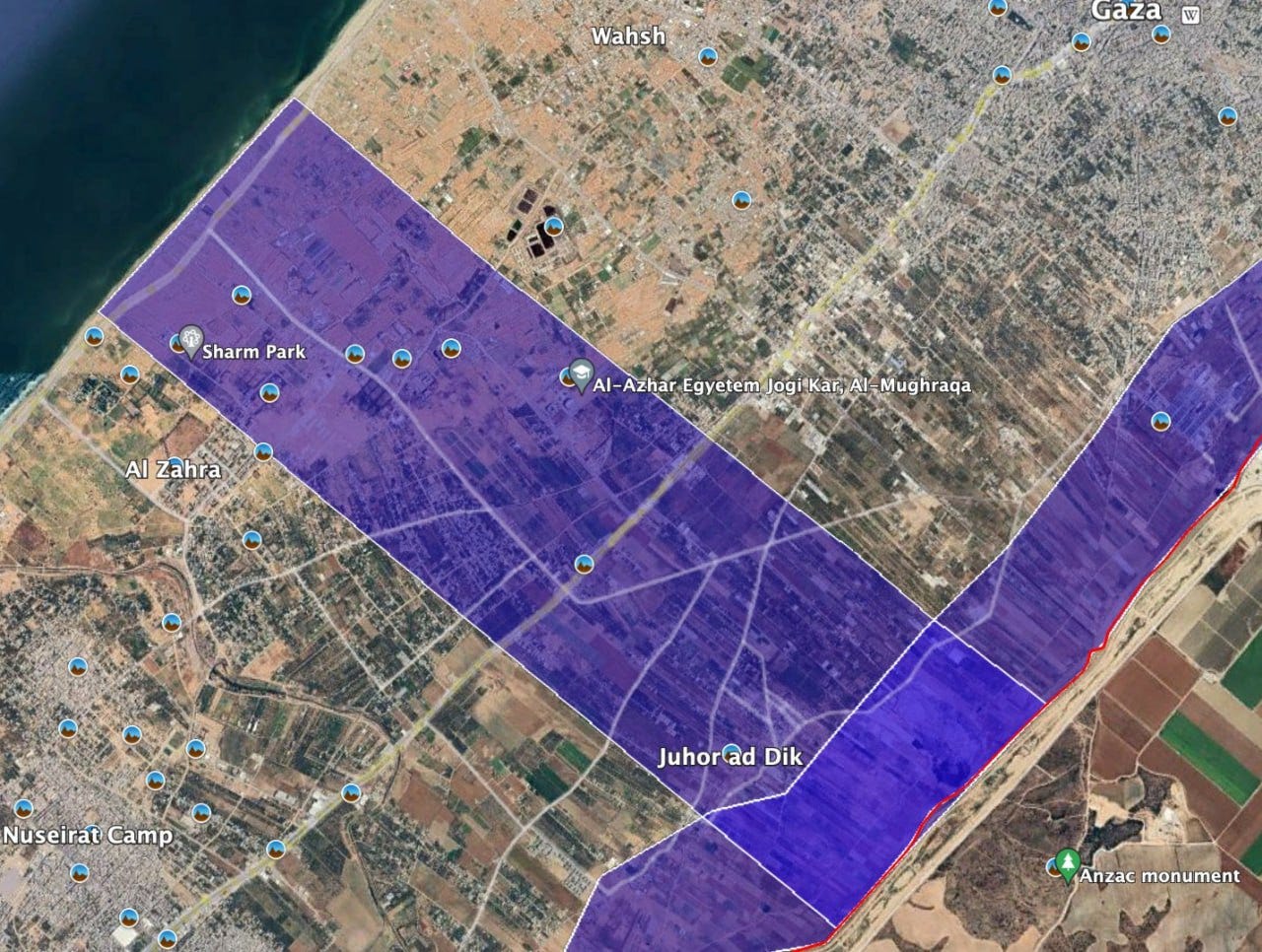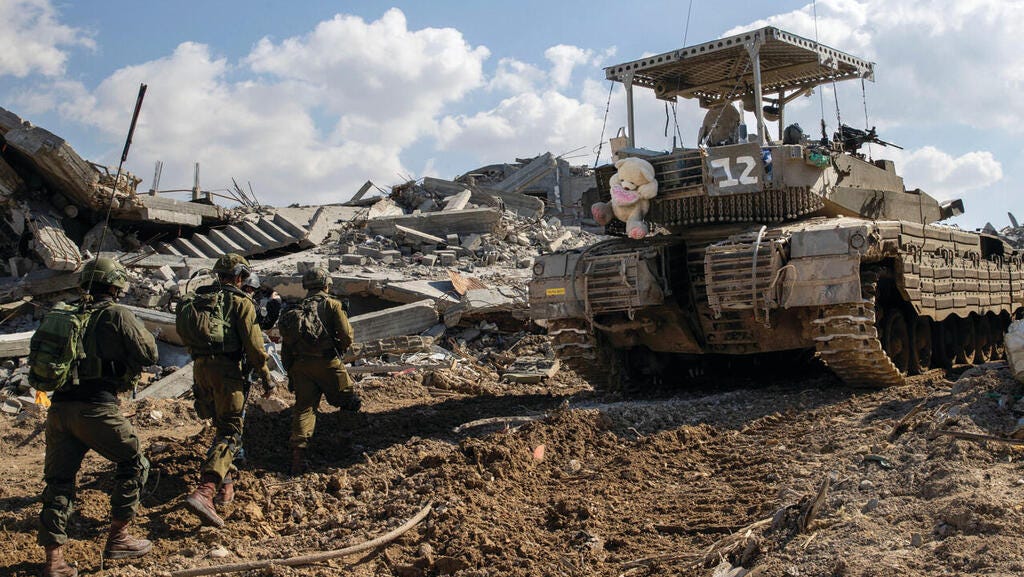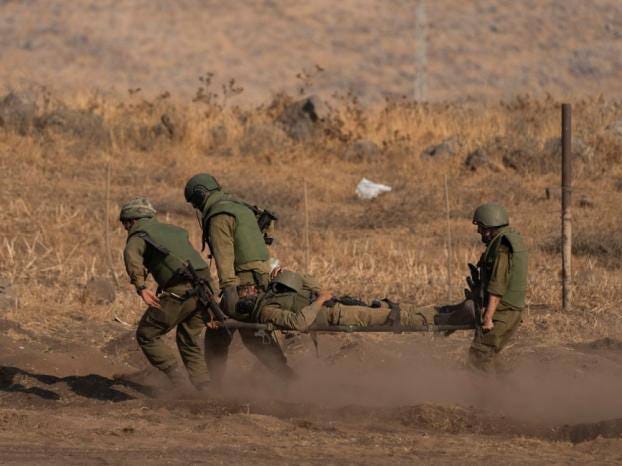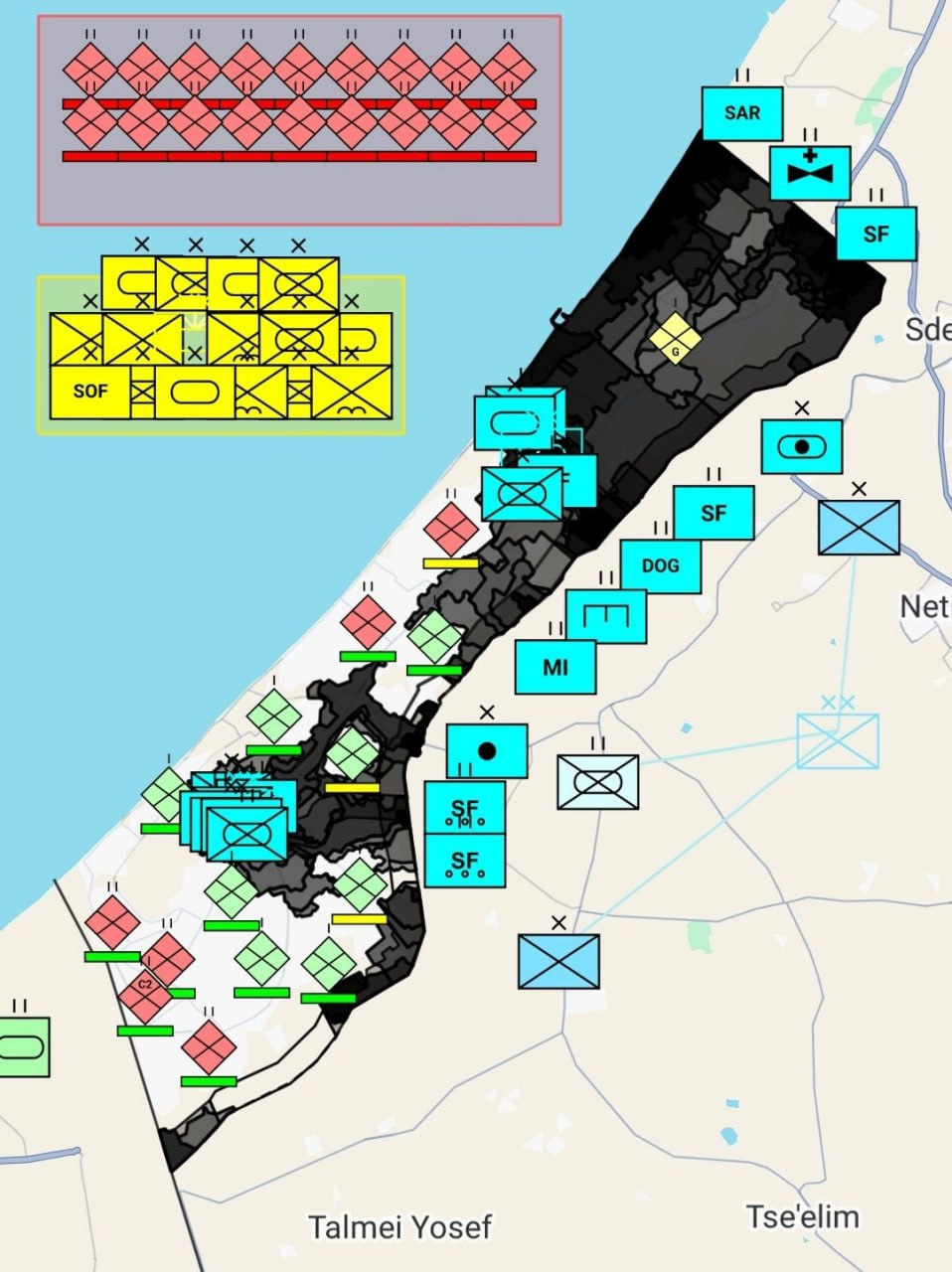The October 7th attacks on Israeli settlements bordering the Gaza strip took the world by surprise as much as it did the Israeli army. In the span of a few hours, over 350 Israeli troops were killed or missing and the country was scrambling to pick up the pieces. Ad Hoc combined arms teams thrown together to stop the wave of Hamas militants from streaming across the Gaza border fence and deeper into the Israeli Negev than they already had were cut off and wiped out. Several heavy CH-53 helicopters loaded to the brim with Israeli infantry were shot down without any survivors and, for a moment, it appeared as if victory genuinely hung in the balance. Hamas kill-teams were going door to door, executing or capturing Israeli settlers while Sayeret Matkal bumbled their way through the narrow alleyways of Ashkelon in a number of friendly fire incidents that killed dozens of their own troops. In hours, the monolithic, untouchable image of the IDF had been shattered by POV kill-cams of sandal clad Hamas infiltrators shooting terrified conscripts at close range. As the shock of the attack wore off and the Israeli Army bore down on the insurgent forces with the full armored weight of its two heavy divisions, the attackers shrunk away into the tunnels of Gaza. An enraged Israeli military conducted round-the-clock bombing with largely dumb munitions, flattening most of the city above while the attackers and their hostages huddled in cramped refuges far beneath the surface.
In three and a half months of war, the Israelis have killed 30,000 Palestinians and displaced millions more as they flail against the ruins of the refugee camps with heavy artillery. In the meantime, the Israeli economy has tanked and the major port of Eliat has become a ghost town. Hundreds of Israeli troops have been killed in the ruins of Gaza and thousands have been wounded. Friction along the Lebanese border has tied up crucial reserves and escalations with Iran are pitting the closest Israeli Ally, the United States, into a position where it must choose between its own welfare and the reputation of the State Department’s pet project. Major protests against Netanyahu allude to significant domestic problems at home as it becomes clear the Israeli war effort is being ripped apart at the seams. Serious power struggles in the Israeli government threaten to derail the prosecution of the ground war against Hamas in the critical moments leading up to the assault on the Rafah crossing, the last stronghold of Hamas that has yet to see Israeli troops claim the surface. As the Israeli momentum falters, neighboring Egypt has begun drawing red lines in the sand and threatened to withdraw from the 1978 Camp David Accords. Heavy Egyptian Armored forces have moved into the region to “prevent Palestinians from swamping the border”, a move that more readily threatens the tenuous Israeli presence than mobs of hungry Palestinians.
For all the noise generated by Israeli politicians and their American Evangelical lapdogs, the Israeli army is remarkably short of victories to show for their indiscriminate bombing campaign and subsequent ground offensive. 80% of Hamas tunnels in the northern regions of Gaza are untouched, and Hamas has already surged into the void left by demobilized Israeli reserves. Almost 4 months of war and the Israeli Army has executed more of its own hostages than it has rescued, all the while giving Hamas massive propaganda victories in publishing gruesome footage of war crimes across the region. The vaunted Golani Brigade, vanguard of the IDF, was unceremoniously withdrawn from combat altogether after Hamas managed to ambush and eliminate its entire command structure in a single firefight. This embarrassment was quickly followed by a lucky rocket catching two dozen IDF reservists in a daisy-chain of their own explosives, vaporizing them instantly. Furthermore, Hamas continues to rocket Israeli settlements surrounding Gaza free of interceptions from an Iron Dome that has fallen noticeably silent, a worrying development for the US-led defense industrial complex at large. In every conceivable aspect, the Israeli Army has so far failed in its aims to neutralize the threat from Gaza that it long pretended did not exist.
The early assessment that the Israeli Army was tactically impotent has been proven woefully accurate. Hamas simply sat back and let the Israelis flail aggressively, enduring the carpet bombing from the security of their tunnel complex. The individual cells that engaged the Israeli offensive directly proved to be effective in their intended purpose— bogging down Israeli armored columns and forcing a grueling infantry-heavy slugfest through the ruins of Gaza. This should come as no surprise— urban warfare has always been Israel’s Achilles Heel. Since the 1948 war, Israel continually struggled to beat the Arabs in dismounted urban combat, the only notable exception being the seizure of the West Bank from Jordan in the 1967 war— one where the Jordanians relied heavily on their armored corps in the narrow corridors of Jerusalem. Having no responsibility to protect the civilians of Gaza from Israel’s onslaught, Hamas has managed the greatest possible leverage from their traditionally disadvantaged position and hit Israel where they have the most to lose. The infantry arm of Israel’s defense force has suffered obscene casualties supporting their armored crawl through the rubble of bombed out buildings, despite all the propaganda seeming to indicate otherwise. Israel has endured an estimated 13,000 wounded (2500+ hospitalized) and further 500 dead outright. There has been consistent speculation since the beginning of the ground offensive that Israel’s propaganda arm has been working overtime to mask the true damage wrought by malnourished Palestinians armed with homemade weapons, but the ugly truth is beginning to come to light in Israeli leadership weighing expanding the conscription period and remobilizing reservists.
At the beginning of hostilities, Israel’s military had about 24,000 infantrymen of varying quality spread over six brigades. This proved to be inadequate in securing Israeli positions throughout the Gaza Strip, and as units are demobilized the Israelis have been forced to withdraw altogether from their hard won positions. The constant threat of war from the northern border with Hezbollah hanging menacingly over their heads, the Israelis have been forced to weigh extended deployments to the high-intensity conflict zone with ensuring any serious incursion from Lebanon would be neutralized. In this, Israel has fallen victim to the same limitations imposed on the Russian Army in their initial incursion into Ukraine in that they lack the requisite numbers of highly trained and disciplined infantrymen to augment their heavy reliance on mechanized forces. For the Russians, this resulted in the embarrassing loss of the Kharkov salient, albeit without serious casualties, when Ukrainian combined arms teams surged past the lightly manned picket lines and deep into the occupied interior. For Israel, this means their battle-weary troops must stay entrenched in the ruins of the urban battle zones without any meaningful rotation for rest and refit.

While the talking heads froth at the mouth over the prospect of seizing and wiping out the last untouched Hamas stronghold in Rafah, the bottom is falling out of the Israeli war effort as a result of their over-reliance on flashy superweapons at the cost of properly manning their line infantry units. Furthermore, tens of thousands of fighting age Israelis, Netanyahu’s son among them, fled the country to the safety of the West to escape this very prospect in the expanded conscription measures being seriously considered at the time of writing. Whether or not the sympathetic propagandists admit it, the Israelis are being forced up against a wall as time is now clearly working against them. The longer their mechanized infantrymen struggle through the rubble of Gaza, the more casualties Israel will endure that cannot be immediately replaced.
The ramifications of these realizations are already having an effect on the goals of the Israeli offensive. When Israel first reacted to the October 7th attacks, social media was rife with genocidal declarations by Israeli officers, boldly declaring they would purge Gaza altogether and put up apartment blocks in the aftermath. Now it appears Israel is merely strengthening the border zones and building a series of highways across the narrow strip with the intent to limit movement between Rafah in the south to Gaza and Beit Lahia in the north. The intent is clear— if Hamas cannot be removed, as Israel originally intended, it will be mitigated with increased surveillance measures and stronger border fortifications. It is impossible to view these developments as anything short of defeat for Netanyahu, who has neither managed to seriously dismantle Hamas nor meaningfully change the situation along the border with Gaza short of adding a few more strands of barbed wire and force Hamas to rely increasingly on their already extensive tunnel complex. Furthermore, there is no end in sight for the blockade imposed on the Bar el Mandeb strait by the Houthi militias, who have escalated to sinking nearby vessels and shooting down American drones.
Given the unwillingness of the Biden Administration to risk more American lives in the region following the devastating secondary and tertiary effects of the Iranian proxy attack on a US base in Syria last month, it is likely the Israeli offensive action has already culminated and a series of de-escalation measures will take place in the near future. The impending withdrawal of American troops from Iraq and Syria cements our position in the region as untenable for the same reasons Israel is struggling to wage war against a ragtag band of miscreants and the Russians lost large swaths of occupied territory to a few armored HMMWVs— the US lacks the manpower to hold it against forces seriously willing to contest its ownership. With each passing day, the prospect of a two-state solution that formerly would have been unacceptable to the Israeli people becomes more and more of a reality. Netanyahu’s desperate gambit to draw the country together in a time of visceral domestic strife has not only backfired, but threatens to constrict the borders of Israel in a way legions of Arab tanks never could. Furthermore, in the past Israel could and did chalk up minimal gains in the face of Hamas/Hezbollah resistance to a willingness to avoid civilian casualties. The IDF’s underwhelming inability to pacify Gaza at any cost severely undermines Israeli negotiating power with rival Arab regimes in the region who are beginning to signal an unwillingness to conform to American geopolitical aims.




